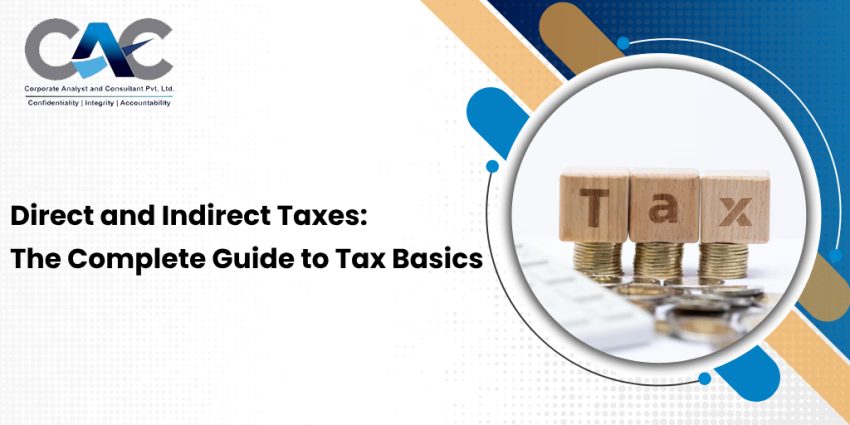Taxation is considered as one of the primary sources of income by any government. They enable the government to construct infrastructure, offer state services, and the development of the country in general. To most people, the topic of taxation is usually very confusing and intimidating. To make it easier, it is better to start by knowing the two general types of taxes: direct and indirect. Then what is a direct and indirect tax and how does it impact on us in our daily lives? We should break it down to simple terms.
Understanding Direct Taxes
Direct taxes refer to those kinds of taxes paid directly to the government by an individual or an organization. These taxes cannot be left to another person. A good example is income tax- you earn a salary and are required to pay income tax on that salary; nobody can pay the tax on your behalf.
Other direct taxes are corporate tax, wealth tax and capital gains tax. The only difference here is that the taxpayer and the bearer of the tax cost is the same person or entity. These are progressive taxes, which imply that they rise with the increase in income or wealth. This will contribute towards minimizing inequality since those who have more income will contribute more to the development of the country.
Understanding Indirect Taxes
On the other hand, indirect taxes are imposed on goods and services as opposed to income or profits. In this instance, the tax pressure can be borne by one individual to the other. As an example, in buying a product in the market, you will pay a Goods and Services Tax (GST). This tax is collected by the seller and handed to the government.
Others are excise duty, customs duty as well as service tax (pre-GST regime). In this case the seller/manufacturer is a mediator, yet the consumer is the one bearing the end cost. The nature of indirect taxes is regressive because they attack all people without paying attention to their income status.
Key Differences Between the Two
To better understand what direct and indirect taxes are, it’s useful to highlight their key differences:
- Collection point: Direct taxes are collected directly from individuals and companies, while indirect taxes are collected through goods and services.
- Burden: The burden of direct taxes cannot be shifted, but in indirect taxes, it is passed on to consumers.
- Nature: Direct taxes are progressive, whereas indirect taxes are usually regressive.
- Examples: Income tax and corporate tax fall under direct taxes, while GST and customs duty fall under indirect taxes.
Why Understanding This Matters
It is significant that every citizen knows what direct and indirect taxes are. Direct taxes assist you in making wise plans in terms of income, savings and investments whereas indirect tax affects your day-to-day expenditures and consumption behaviors. These taxes combined are the keystones of the government revenues and are crucial in economic formation.
Conclusion
To conclude, the question of what direct and indirect taxes are can be answered by the fact that it is the way they are imposed and the fact that the final burden is taken either by the individual or by the government. Direct taxes are associated with income and wealth, and these are paid directly to government whereas indirect taxes are incorporated in the cost of goods and services. The two kinds are necessary in the development of the country, and learning about them is the initial move to being a better and more educated taxpayer.
Also Read: Direct and Indirect Taxes: Implications for decision-making
















